10 Must-Visit Places in East Bali – Most people never see the real Bali. They think Bali is just beaches and parties. Be different; explore the untouched East Bali. Between the serenity of ancient temples and the unrest of modern tourism, East Bali stands as a region pulling at the seams of tradition and change.
East Bali is a gem filled with cultural richness, spiritual landmarks, and natural beauty that remains somewhat untouched by the usual tourist crowds. From majestic temples to serene landscapes, here’s your guide to the top 10 must-visit places in East Bali.
1. Lempuyang Temple
Known as the ‘Gateway to Heaven,’ Lempuyang Temple offers one of the most iconic views in Bali. Snap that perfect shot with Mount Agung in the background and feel the spiritual vibe of this sacred place.
What makes it unique
Lempuyang Temple is not just celebrated for its stunning panoramic views but also for its spiritual significance in Balinese culture. It is one of Bali’s nine directional temples and protects the island from evil spirits.
Opening Hours
Lempuyang Temple, a revered site in Bali, opens its doors to visitors every day from 7:00 AM to 5:00 PM. Visitors are encouraged to arrive early to witness the spectacular sunrise views over Mount Agung, which is a highlight for many who trek to this sacred temple. Additionally, adhering to the respectful dress code, which includes wearing a sarong and sash, is required for all visitors entering the temple grounds.
Location
Lempuyang Temple is situated in eastern Bali, within the highlands of Mount Lempuyang in Karangasem Regency.
How to get there
The temple is accessible by car from most tourist hubs in Bali. It’s about a 2-hour drive from Denpasar and roughly 90 minutes from Ubud. Due to the mountainous roads and remote location, it’s advisable to hire a driver or join a guided tour for convenience and safety.
Ticket price
As of March 2024, the entrance fees to Lempuyang Temple in Karangasem, Bali, are IDR 40,000 per person for domestic tourists and IDR 70,000 per person for international tourists. The shuttle bus service is available for IDR 40,000. Each ticket price includes a sarong and a flute for ceremonial use. Additionally, professional photography services can be accessed for an additional fee.
Tips
- Arrive early to avoid the crowds and the midday heat, especially if you’re aiming to take photographs.
- Dress appropriately as Lempuyang Temple is a place of worship. Cover your shoulders and legs; sarongs and sashes are available for rent at the entrance.
- Be prepared for a steep climb; the temple is at the top of 1,700 steps, which can take anywhere from 30 minutes to an hour to ascend.
- Remember to bring water, wear comfortable shoes, and carry sun protection.
- Respect the local customs and the sanctity of the temple. It’s not just a tourist attraction but a place of religious importance to the Balinese people.
2. Ujung Water Palace
Explore the historic Ujung Water Palace, where water gardens and beautiful architecture blend seamlessly with the surrounding nature. It’s a peaceful spot perfect for a leisurely stroll and some fantastic photos.
What makes it unique
Ujung Water Palace is a former palace of the King of Karangasem, featuring a combination of Balinese and European architecture. It’s known for its picturesque water features, including vast pools and fountains, set against the backdrop of Mount Agung and the eastern shoreline.
Opening Hours
Ujung Water Palace welcomes visitors from 8:00 AM to 6:00 PM daily, offering ample time to explore its expansive gardens and historical structures. The palace, often referred to as Taman Ujung, features a blend of Balinese and European architecture set against a dramatic backdrop of lush green hills and clear blue skies. Visitors can stroll along its many pathways, admire the reflective pools, and discover ornate bridges and pavilions that provide perfect spots for relaxation and photography. This serene environment is ideal for those looking to immerse themselves in the beauty and tranquility of one of Bali’s most picturesque historical sites.
Location
The palace is located in the village of Tumbu, Karangasem Regency, in the southeastern part of Bali.
How to get there
Ujung Water Palace is about a 2-hour drive from Denpasar or around 90 minutes from Amed. The best way to visit is by car, and many choose to hire a driver for a day trip, often combined with a visit to nearby attractions such as Tirta Gangga.
Ticket price
Admission to Ujung Water Palace is approximately IDR 75,000 per person for international tourists, which helps with the maintenance and preservation of this historical site.
Tips
- Visit early in the morning or late in the afternoon to enjoy cooler temperatures and softer lighting for photography.
- Wear comfortable walking shoes as the grounds are extensive, with many areas to explore.
- Bring a camera to capture the stunning architecture and lush landscapes.
- Consider hiring a local guide at the entrance to learn more about the history and significance of the palace.
- Stay hydrated and bring sun protection, as much of the area is exposed to direct sunlight.
- Check local listings for cultural events or ceremonies that may be taking place during your visit, as these can enhance your experience.
3. Tirta Gangga
Step into the royal gardens of Tirta Gangga, where stone sculptures and flowing fountains meet large pools filled with koi. It’s an ideal place to immerse yourself in Bali’s royal past and connect with nature.
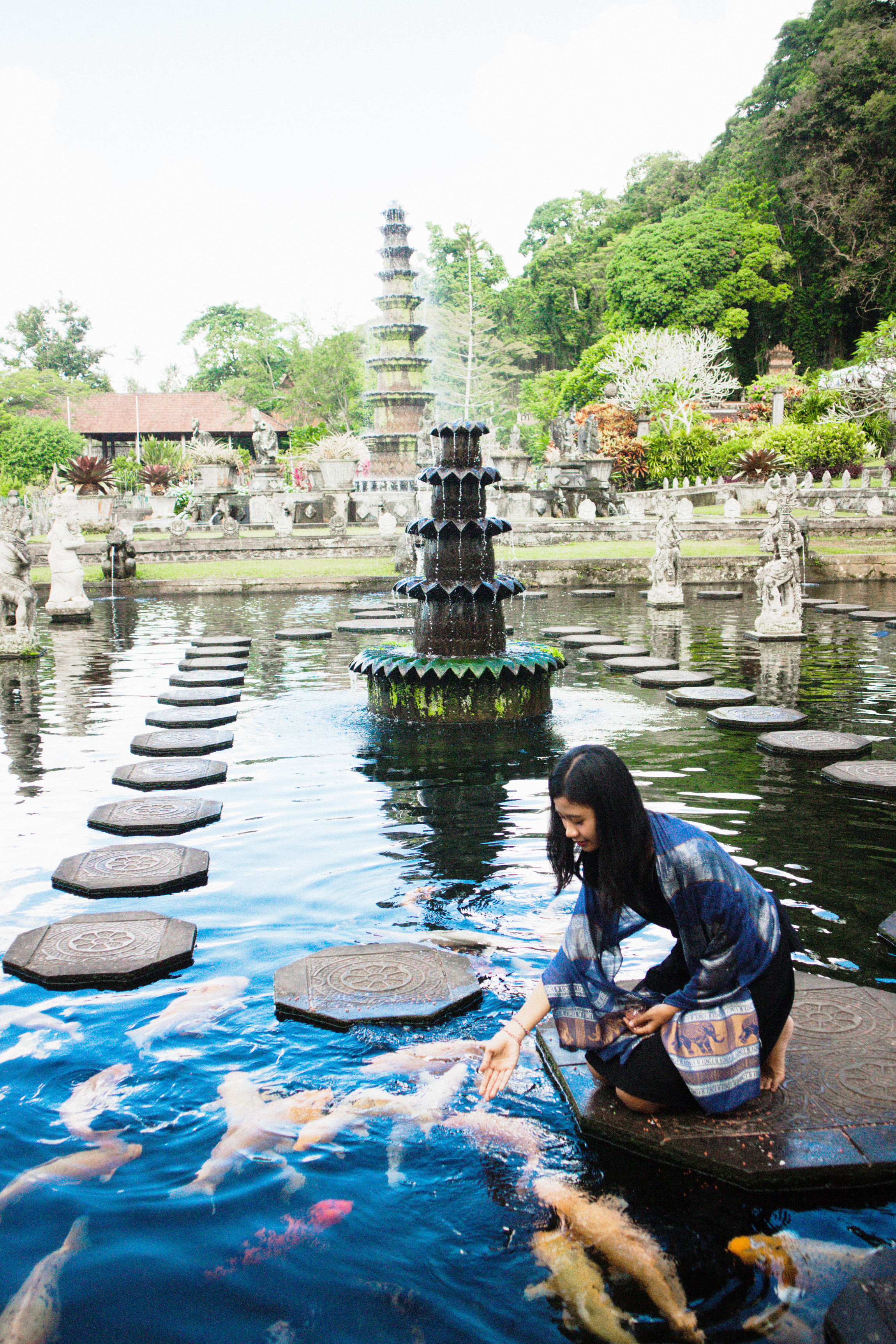
What makes it unique
Tirta Gangga is a former royal water garden built in 1948 by the Raja of Karangasem. The complex is famous for its unique blend of Balinese and Chinese architecture, featuring ornate water fountains, stone carvings, and lush gardens. The centerpiece is a maze of pools and ponds, which are home to a vibrant collection of koi fish that visitors can feed.
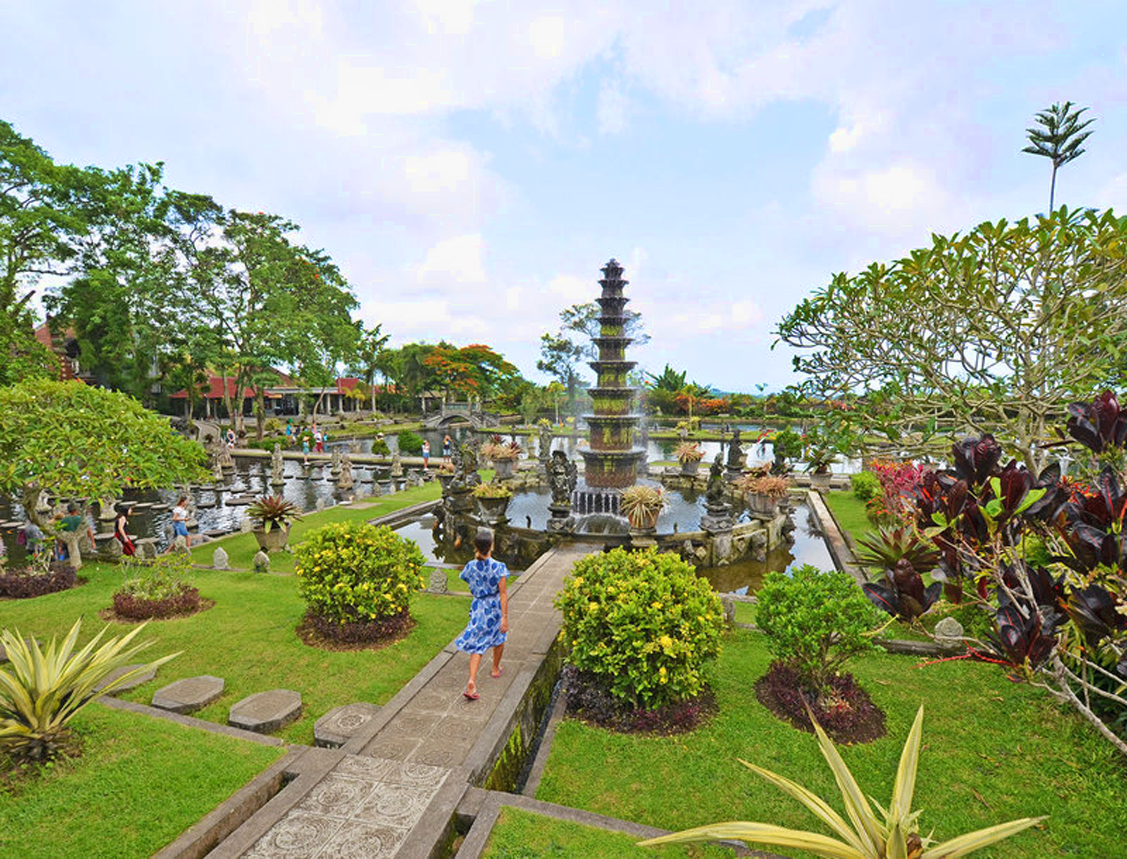
Opening Hours
Tirta Gangga, open from 7:00 AM to 6:00 PM daily, invites visitors to experience its enchanting water gardens early in the morning, which is ideal for avoiding the midday heat and crowds. This royal water garden is famed for its crystal-clear pools, fountains, and stone carvings of mythical creatures, all set within a lush landscape
Location
Tirta Gangga is located in the northeast of Bali, near the town of Ababi, about 10 kilometers north of Amlapura, the capital of Karangasem Regency.
How to get there
Tirta Gangga can be reached by car from Denpasar in about two and a half hours, making it a popular day trip. The roads are scenic but winding, and it’s advisable to hire a local driver for convenience and safety, especially if combining the trip with visits to other nearby attractions like Lempuyang Temple or Ujung Water Palace.
Ticket price
Entry to Tirta Gangga is approximately IDR 40,000 for international tourists. This fee contributes to the maintenance and preservation of this historical site.
Tips
- Visit early in the morning to avoid crowds and to capture the best light for photography.
- Wear comfortable footwear as the gardens involve some walking and steps.
- Bring small change to buy fish food; feeding the koi fish is a popular and fun activity for visitors of all ages.
- Be prepared for occasional rain showers by bringing an umbrella or raincoat, especially if visiting during the rainy season.
- Make use of the on-site restaurants and cafes to sample some local cuisine with a view of the gardens.
- Respect the cultural and spiritual significance of the site; although it is a tourist attraction, it remains a place of historical and religious importance to the local community.
4. Taman Edelweis Bali
Taman Edelweis is a unique attraction offering fields of edelweiss flowers against the backdrop of Bali’s mountainous landscape. It’s perfect for a quiet afternoon away from the beach crowds.
View this post on Instagram
What makes it unique
Taman Edelweis is distinctive for its cultivation of the rare edelweiss flower, typically found in higher alpine regions. The park provides a cool, serene escape with its sprawling fields of these resilient blooms, which are often referred to as “flowers of immortality.”
Opening hours
The garden is open daily from 8:00 AM to 5:00 PM, allowing visitors to enjoy the beauty of the flowers during the cooler parts of the day.
Location
Taman Edelweis is located in the central highlands of Bali, near the village of Bedugul.
How to get there
The easiest way to reach Taman Edelweis is by car or motorbike, as it is approximately a 90-minute drive from Denpasar. Public transportation options are limited, so renting a vehicle or hiring a driver for the day is recommended, especially if planning to visit other nearby attractions such as the Ulun Danu Beratan Temple.
Social Media
Capture and share your experience! Taman Edelweis has its own Instagram account. Follow and tag @tamanedelweis_bali, and use the hashtag #TamanEdelweisBali to post and view photos of the gardens.
View this post on Instagram
Ticket price
Entrance to Taman Edelweis is approximately IDR 50,000 per person, which contributes to the maintenance and preservation of the gardens.
Tips
- Dress warmly, as the higher altitude can make the area cooler than other parts of Bali, especially in the mornings and late afternoons.
- Bring a camera to capture the scenic views and the unique floral displays.
- Check the weather forecast before visiting, as the highlands can be foggy or rainy, which might affect visibility.
- Consider packing a picnic to enjoy among the flowers, as there are designated areas where visitors can relax and take in the serene environment.
- Be respectful of the natural surroundings; while the flowers are sturdy, they are also rare and should not be picked or damaged.
5. Sunset Point Amed Bali
Catch a breathtaking sunset at Sunset Point Amed. With its laid-back vibe and stunning coastal views, it’s the perfect spot to end your day in East Bali.

What makes it unique
Sunset Point Amed offers some of the most spectacular sunset views on the island, overlooking the vast Indian Ocean. Its unique location on a rocky outcrop provides unobstructed views of the horizon, making it an ideal place for photography enthusiasts and romantic outings.
View this post on Instagram
Opening hours
The Sunset Point Amed is open daily from 8:00 AM to 5:00 PM. The point is accessible throughout the day, but the best time to visit is in the late afternoon, around an hour before sunset, to secure a good spot.
Location
Sunset Point Amed is located on the eastern tip of Bali, in the Amed area known for its traditional salt farming and excellent snorkeling spots.
How to get there
The most convenient way to reach Sunset Point Amed is by car or motorbike from central Bali. The drive can take approximately 2.5 hours from Ubud or Denpasar, offering scenic views along the way.
Social Media
Follow and share your experiences on Instagram at @sunsetpointamed. Don’t forget to use the hashtag #SunsetPointAmed for a chance to be featured and to see how others captured their moments.
View this post on Instagram
Ticket price
There is no entry fee to visit Sunset Point Amed, but some areas might charge for parking.
Tips
- Arrive early to explore the surrounding area and find the perfect spot for sunset viewing.
- Bring a camera and a tripod for stunning sunset photos.
- Pack a light jacket as it can get breezy and cooler in the evenings.
- Consider staying in Amed for a night to enjoy its relaxed atmosphere and to explore nearby attractions without rushing.
- Respect the natural environment; keep it clean and dispose of trash responsibly.
Spending at Sunset Point Amed Bali
While visiting Sunset Point Amed is free of charge, you might want to budget for other expenses to enhance your experience. Many visitors choose to dine at one of the nearby cafes or restaurants, where you can enjoy a meal or a drink with a view of the sunset.
Menu Prices
- Average cost for a meal: IDR 50,000 – 150,000 per person
- Beverages (coffee, tea, soft drinks): IDR 20,000 – 50,000
- Alcoholic drinks (beer, cocktails): IDR 30,000 – 100,000
These prices are approximate and can vary depending on the establishment and its location relative to the sunset view. Some places might charge a premium for the best seating areas during sunset hours, especially if they offer unobstructed views of the horizon.
More Information: https://menu.sunsetpointamedbali.com
Tips for Budgeting
If you’re looking to save money, consider bringing your own snacks and drinks to enjoy while watching the sunset. Check if the restaurant or cafe has a minimum spend requirement, especially in prime viewing spots. Some venues may offer happy hour specials or discounts during sunset hours, so it’s worth asking or checking their promotions ahead of your visit.
6. Lamontage Coffee
Take a break at Lamontage Coffee, where you can enjoy a fresh brew with views of lush greenery. It’s a great spot to relax and plan your next moves.
What makes it unique
Lamontage Coffee is celebrated for its excellent selection of locally sourced coffee and its serene setting amidst sprawling green landscapes. The cafe provides a cozy, artistic environment that encourages relaxation and creativity, making it a favorite among both locals and travelers.
View this post on Instagram
Opening hours
Lamontage Coffee is open daily from 0:00 AM to 6:00 PM, providing ample time for morning coffee lovers as well as those looking to unwind in the evening.
Location
Lamontage Coffee is nestled in the tranquil hills of East Bali, offering a peaceful escape from the more tourist-centric areas.
How to get there
The cafe is accessible by car or scooter from nearby areas like Amed or Denpasar. The journey offers a scenic drive through Bali’s less urbanized regions, adding to the overall experience of visiting Lamontage Coffee.
Social Media
Stay connected and share your moments at Lamontage Coffee on Instagram by following @lamontagecoffee and using the hashtag #LamontageCoffee. The cafe often features customer posts, showcasing the unique experiences of visitors.
View this post on Instagram
Ticket price
There is no entry fee to visit Lamontage Coffee, but guests typically spend between IDR 50,000 to IDR 100,000 per person for coffee and snacks.
Tips
- Try their signature blend or ask for the barista’s recommendation to enjoy some of the best coffee in Bali.
- The outdoor seating area offers the best views; grab a spot there if you can.
- Bring a book or a notebook—Lamontage Coffee’s tranquil atmosphere makes it an ideal place for reading or journaling.
- Check out their special events and live music sessions, which they host regularly to entertain guests.
- If you’re visiting during peak hours, be patient as the service can be a bit slow, reflective of the laid-back Bali lifestyle.
Spending at Lamontage Coffee
While there’s no entry fee to enjoy the ambiance at Lamontage Coffee, guests can expect to spend on their menu offerings. Here’s a breakdown of typical costs for a visit:
Menu Prices
- Coffee and Espresso Drinks: IDR 30,000 – 50,000
- Specialty Coffees (like cappuccinos, lattes, or seasonal specials): IDR 35,000 – 60,000
- Fresh Juices and Smoothies: IDR 25,000 – 45,000
- Light Bites and Pastries: IDR 20,000 – 50,000
- Heavier Meals (like sandwiches or salads): IDR 50,000 – 100,000
For more information: Click here
These prices are approximate and depend on what you order. Lamontage Coffee prides itself on using high-quality, locally sourced ingredients, which is reflected in their pricing but still offers good value considering the quality and setting.
Tips for Budgeting
- Consider visiting during off-peak hours; sometimes cafes offer discounts or special pricing to attract more customers.
- Look out for combo deals or set menus which might offer a combination of a drink and a snack at a reduced price.
- If you’re on a tight budget, sticking to coffee and avoiding more expensive specialty drinks can keep costs down.
- Sharing larger dishes or platters with a friend can also be a more economical choice.
Lamontage Coffee provides a tranquil spot to enjoy superb coffee and tasty treats, all while surrounded by the natural beauty of East Bali’s landscapes. Whether you’re there for a quick coffee or a leisurely meal, it’s a delightful place to relax and recharge.
7. Mother Temple of Besakih
Visit the Mother Temple of Besakih, the largest and holiest temple in Bali. This sprawling complex is a significant spiritual and cultural site set on the slopes of Mount Agung.
What makes it unique
Besakih Temple, known as Bali’s ‘Mother Temple,’ covers six levels of terraced landscape and comprises twenty-three separate but related temples. The largest and most important is Pura Penataran Agung. The entire complex embodies a unique majesty and mystique, especially during religious ceremonies with Mount Agung, an active volcano, providing a dramatic backdrop.
Opening hours
The temple is open daily from 8:00 AM to 5:00 PM for visitors, although the prayer areas remain accessible for worship 24/7.
Location
Besakih Temple is located on the southwestern slopes of Mount Agung in eastern Bali in the village of Besakih.
How to get there
The temple is about a 90-minute drive from Ubud and can take up to 2 hours from Denpasar depending on traffic. It is recommended to hire a private car with a driver for convenience, as public transport options are limited and do not go directly to the temple.
Ticket price
Entry to Besakih Temple typically costs IDR 100,000 for foreign tourists, which includes a sarong rental and if needed for entering the temple areas and shuttle service.
Tips
- Dress respectfully when visiting; both men and women should wear a sarong and sash, which can be rented at the entrance.
- Due to its religious importance, be prepared for local guides insisting on escorting you for a fee; it’s advisable to agree on a price before starting your tour.
- The area is known for frequent rainfall; bring a raincoat or umbrella.
- As with any major tourist site, be wary of overly persistent souvenir sellers.
- Visit early in the morning to avoid crowds and to experience a more spiritual atmosphere.
- Be respectful of worshippers and ceremonies; photography may not be permitted during religious activities.
Visiting Besakih offers a profound glimpse into the spiritual life of Bali and presents an opportunity to see Balinese Hinduism’s most revered site.
8. Tenganan Ancient Village
Discover the unique culture of Bali Aga at Tenganan Ancient Village. This preserved village offers a glimpse into Bali’s pre-Hindu customs and traditional crafts.
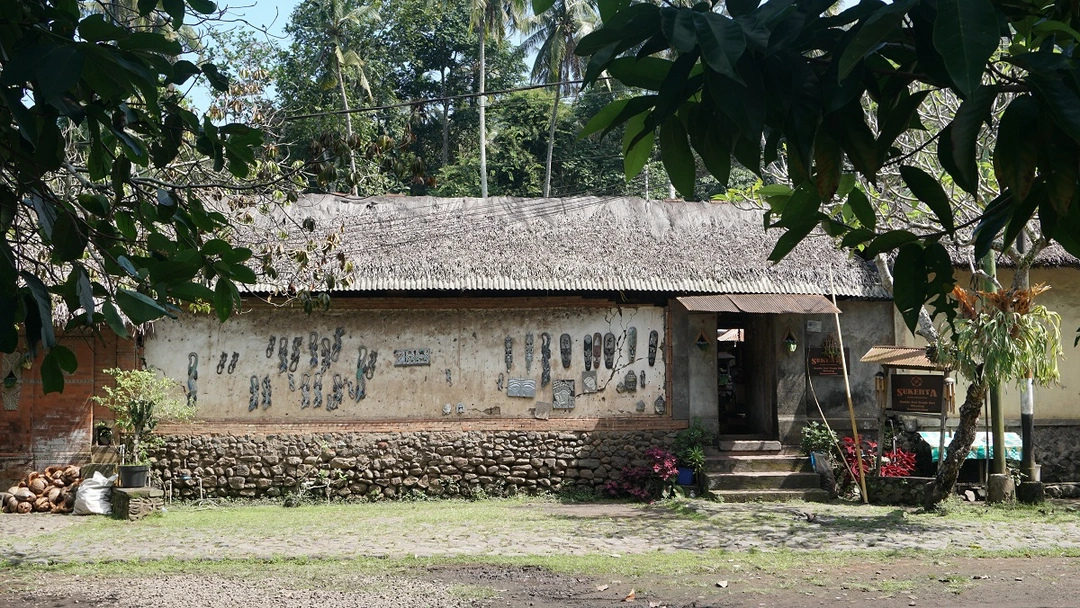
What makes it unique
Tenganan Ancient Village is one of the few places in Bali where you can experience the Bali Aga culture, which predates Hindu influences. The village is renowned for its well-preserved architecture, rituals, and communal lifestyle, as well as for its production of gringsing, a double ikat cloth that cannot be found anywhere else in the island.
Opening hours
The village is open to visitors daily from 8:00 AM to 6:00 PM.
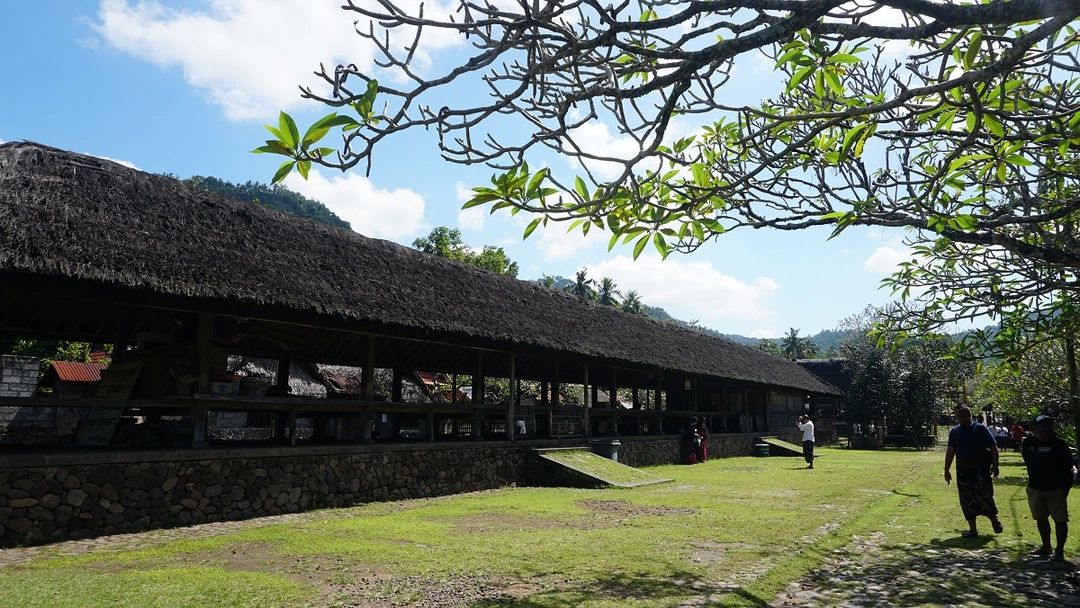
Location
Tenganan Ancient Village is located in the Karangasem Regency in East Bali, nestled in the hills just northwest of Candidasa.
How to get there
Tenganan is most easily accessed by car or motorbike from nearby areas such as Candidasa, approximately a 15-minute drive away. From Denpasar or Ubud, expect a journey of about 1.5 to 2 hours depending on traffic.
Ticket price
There is typically a small entrance fee to enter the village, usually around IDR 30,000 per person, which goes towards the maintenance of the village and supports the local community.
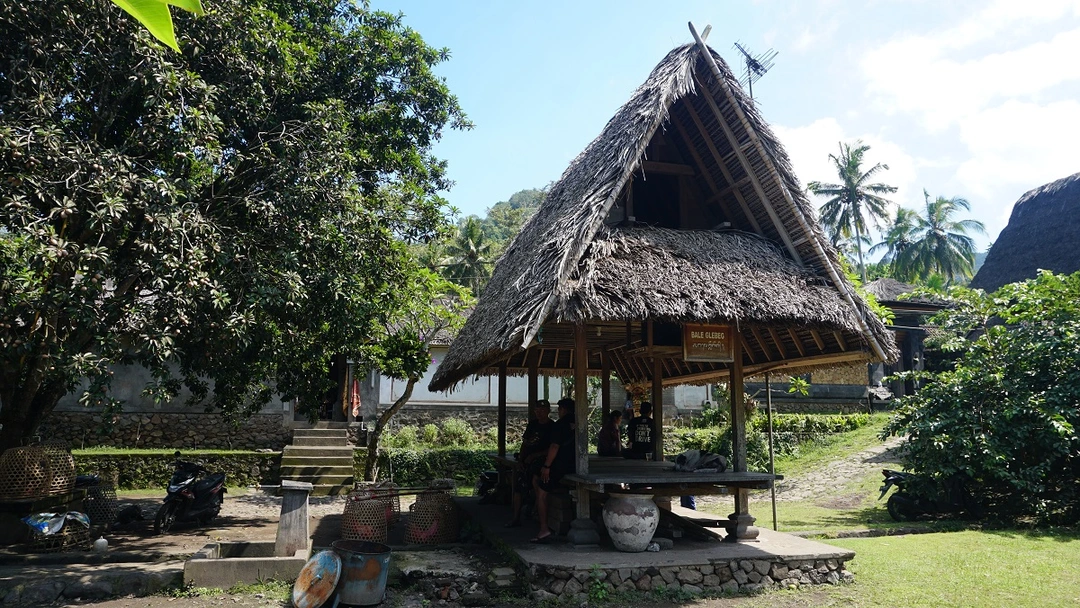
Tips
- Wear comfortable walking shoes as you will be exploring mostly on foot.
- Be respectful of the villagers and their customs, especially when photographing; always ask for permission.
- Try to visit during a village ceremony or festival to see the community in full cultural display.
- Purchase local handicrafts directly from artisans as a way to support the local economy.
- Bring cash, as many sellers do not accept credit cards.
Visiting Tenganan Ancient Village is a rare opportunity to step back in time and experience a way of life preserved for centuries.
9. Pantai Nyuh Gading
For a day at the beach, head to Pantai Nyuh Gading. Known for its golden sands and clear waters, it’s ideal for swimming and sunbathing.
What makes it unique:
Pantai Nyuh Gading is renowned for its exceptionally fine, golden sand and tranquil, crystal-clear waters, making it a perfect spot for a relaxing day at the beach. Its less crowded nature provides a serene escape from more tourist-heavy beaches.
Opening hours:
The beach is accessible all day, but visiting hours are recommended from sunrise to sunset for the best experience.
Location:
Pantai Nyuh Gading is located in the southern part of Bali, near the popular areas of Seminyak and Legian.
How to get there:
The beach is easily accessible by car or scooter from nearby tourist areas. It’s about a 30-minute drive from Denpasar and can also be reached by local buses or taxis.
Ticket price:
There is no entry fee to visit Pantai Nyuh Gading, making it a great free activity in Bali. Please prepare cash for parking.
Tips:
- Bring sunscreen and a hat as shade is limited.
- Arrive early to enjoy the quietest times and pick the best spot.
- Consider bringing a picnic, as there are limited facilities nearby.
- Be sure to clean up after yourself to help preserve the beach’s natural beauty.
10. Bukit Asah
For adventurers, Bukit Asah offers stunning clifftop views and is a fantastic spot for camping under the stars.
What makes it unique:
Bukit Asah is a true gem with its stunning panoramic views from the cliff top, where you can gaze out over the expansive ocean. It’s the perfect place to catch both the sunrise and sunset, making it a beloved spot for photographers and nature enthusiasts alike. Plus, if you’re up for an adventure, it’s a popular camping site where you can enjoy a night under the stars against an absolutely breathtaking backdrop. Come and discover this idyllic retreat for yourself!
Opening hours:
Open 24 hours, but it’s best visited at sunrise or sunset for the most impressive views.
Location:
Bukit Asah is located in the Karangasem Regency in East Bali.
How to get there:
It’s most accessible by car or motorbike from the main areas of Bali. From Denpasar, it’s approximately a 1.5-hour drive. Local transport options are available but less frequent.
Ticket price:
There is no entrance fee to access the cliff view, but camping might require a small fee to set up a tent.
Tips:
- Bring camping gear if you plan to stay overnight.
- Wear comfortable shoes as the terrain can be uneven.
- Bring your camera to capture the stunning views.
- Check the weather beforehand, especially if you plan to camp.
- Be mindful of the environment and take all trash back with you.


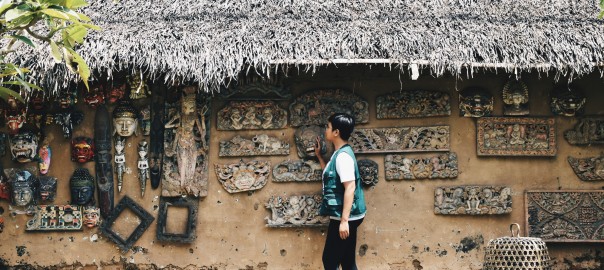
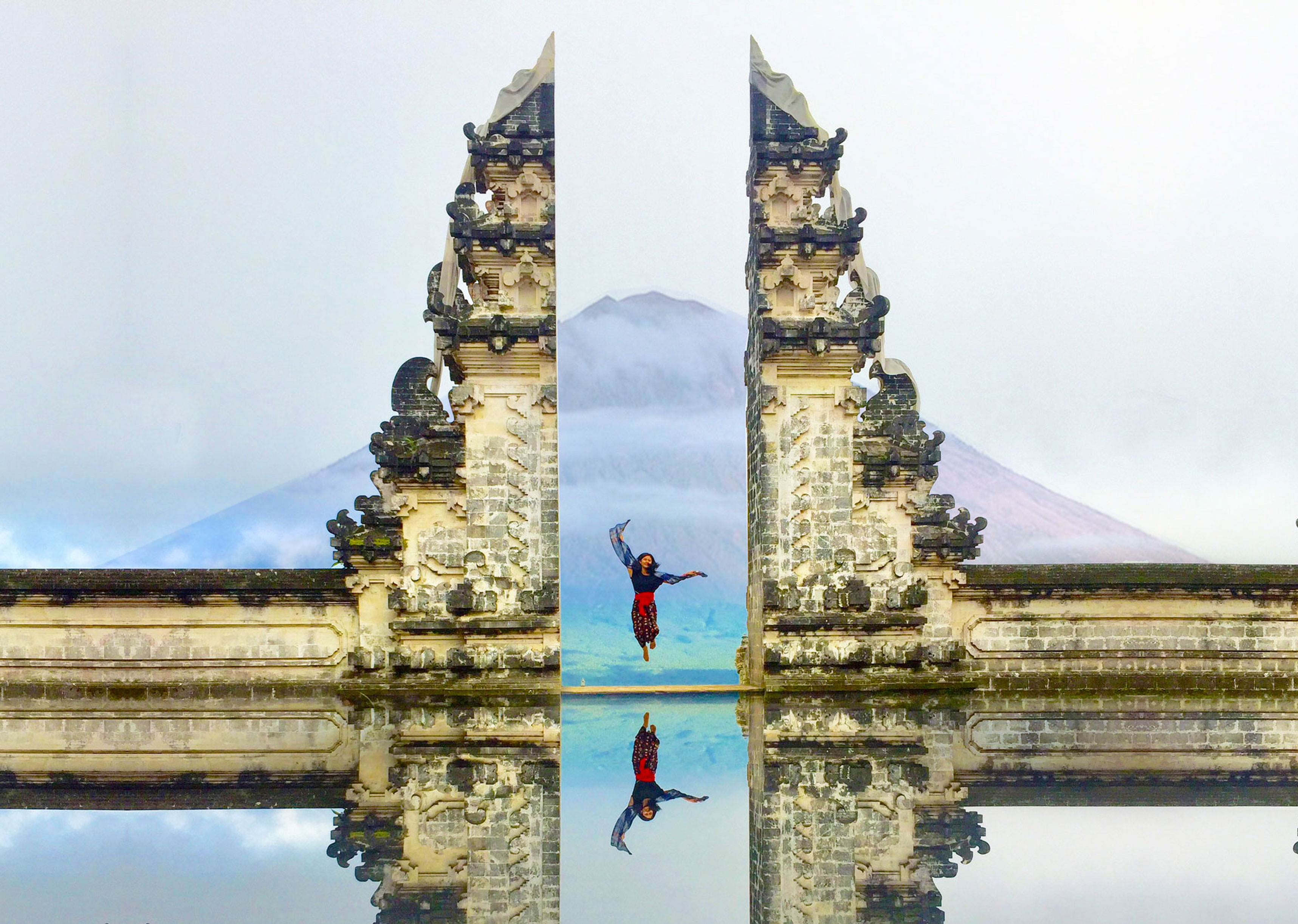

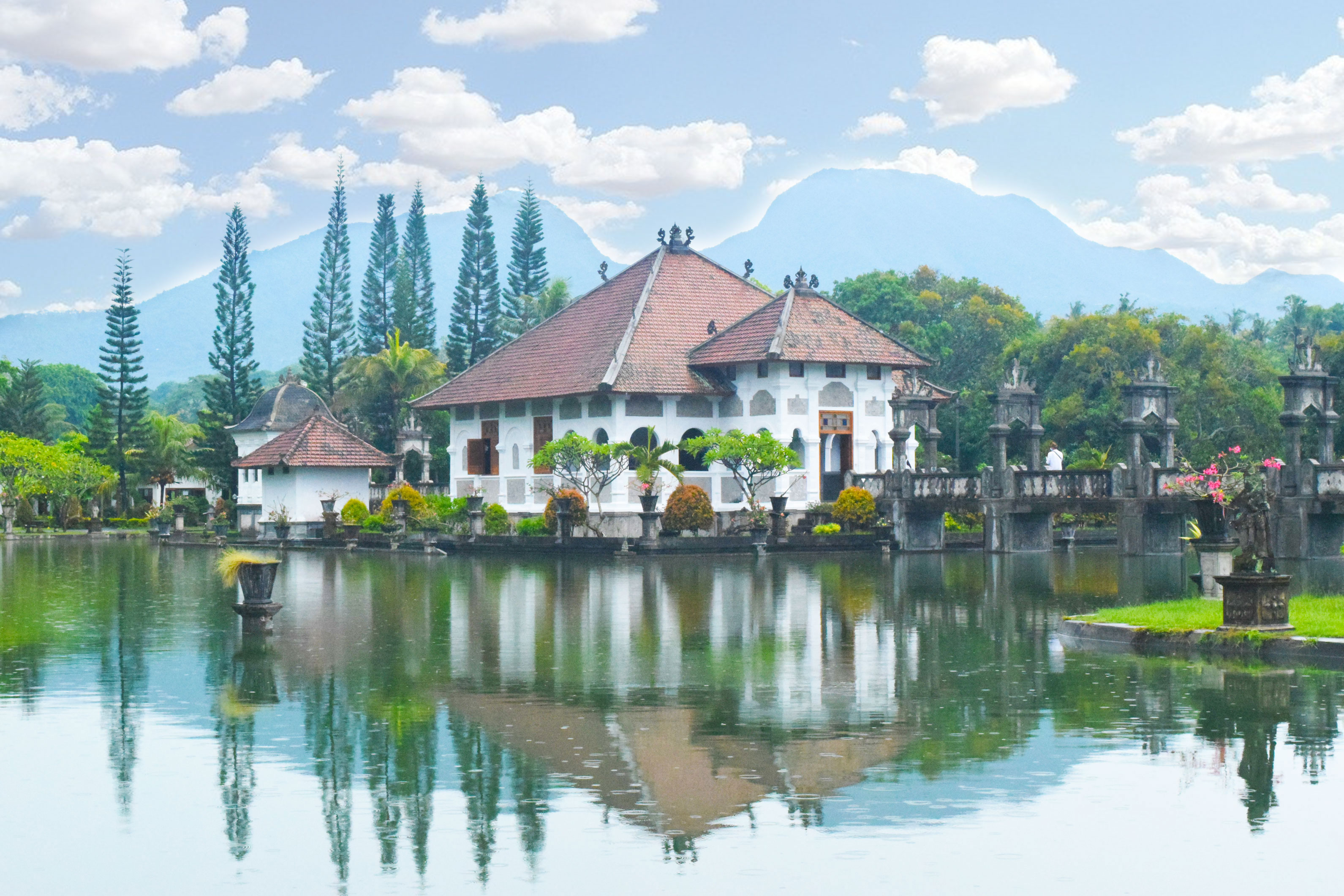
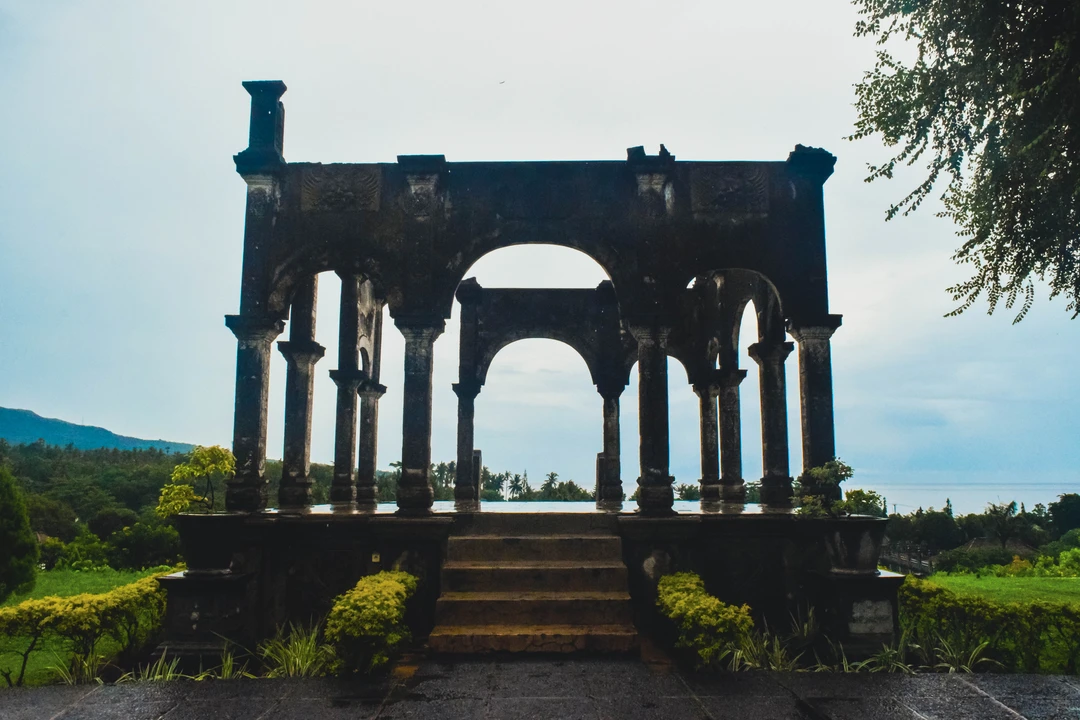
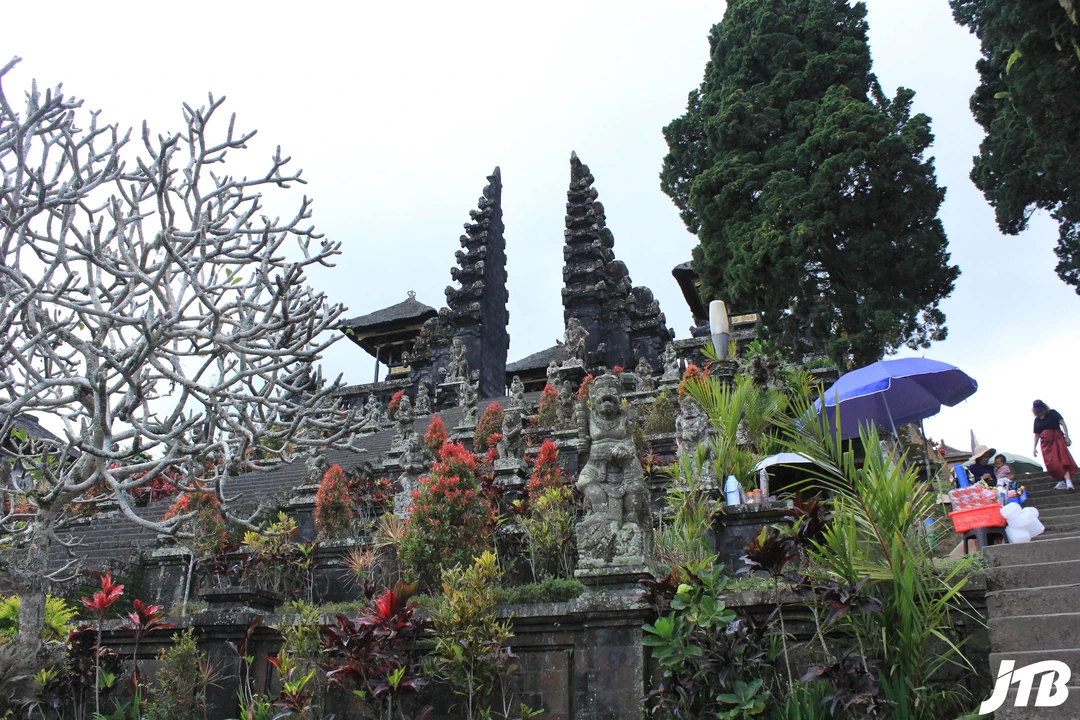
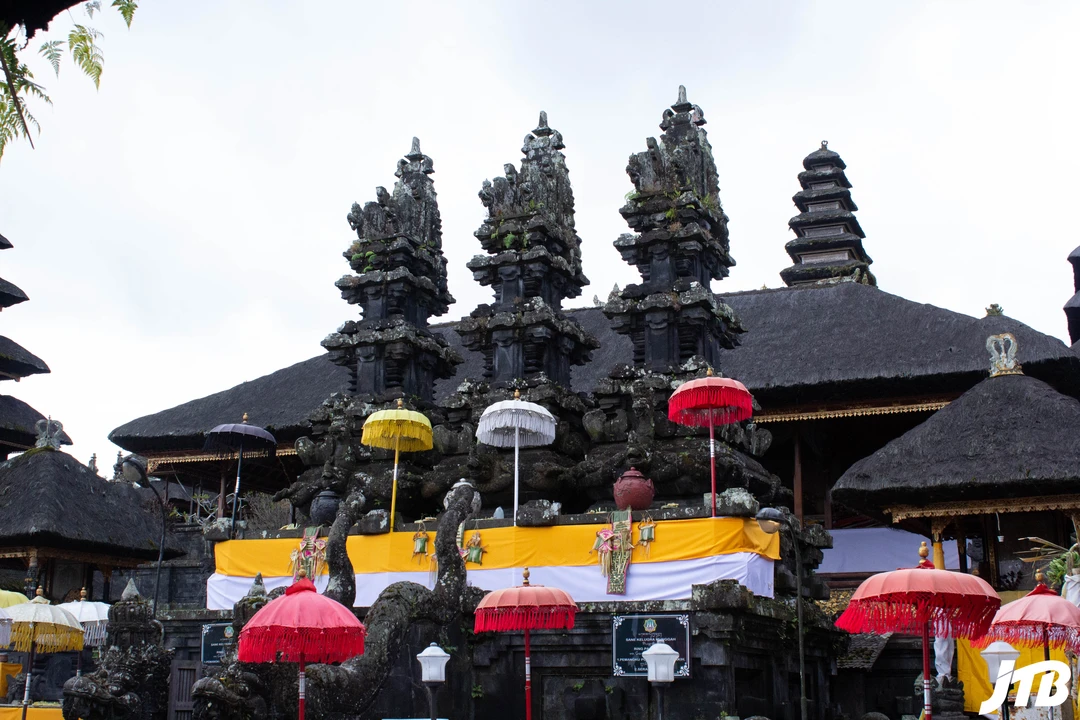


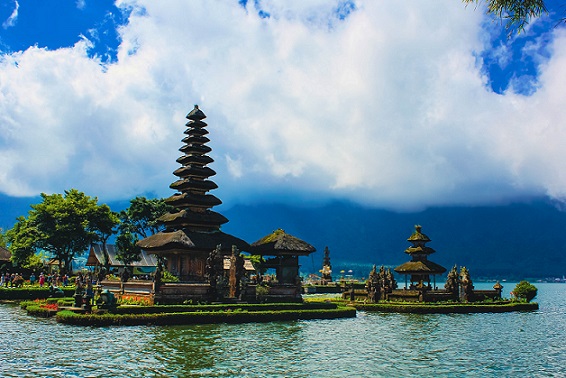
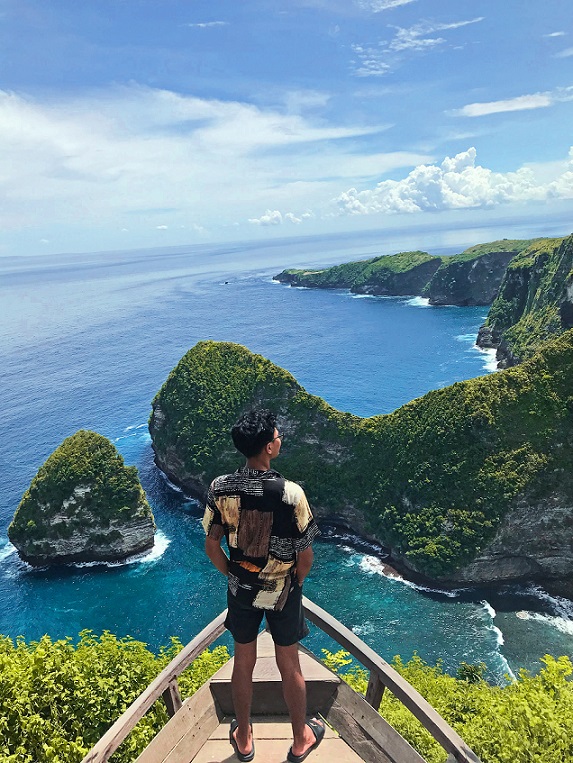
Recomended 10 places to visit in East Bali